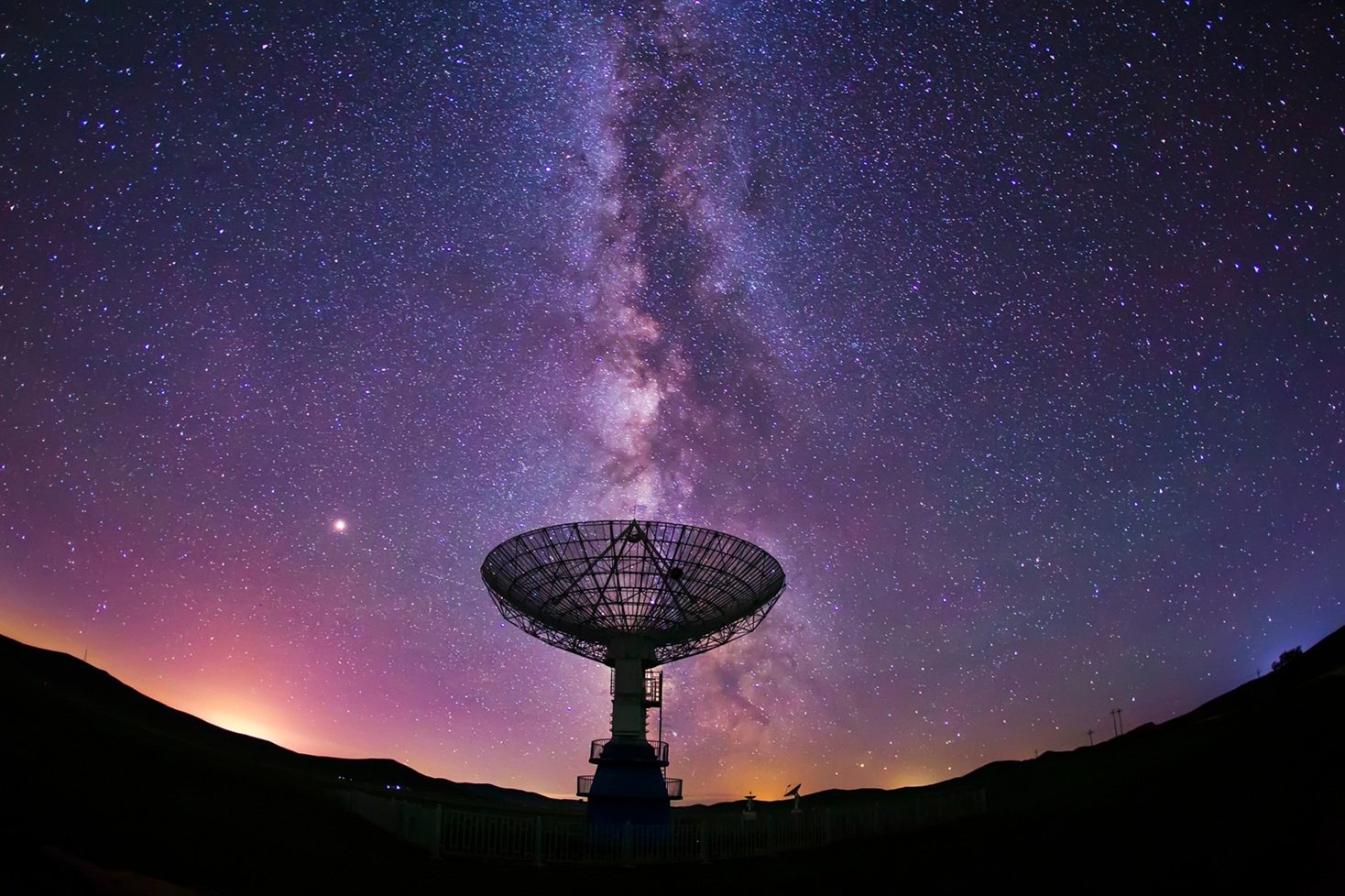The world of particle physics shakes as it turns out that muons behave differently than predicted by the standard model. Is the standard model broken? Did scientists find evidence for new physics?
An above-ground overview of the Fermilab particle accelerator - Image Credit: Fermilab, Reidar Hahn via Wikimedia Commons / HDR tune by Universal-Sci
The discovery was made with an experiment at the Fermi lab particle accelerator in Illinois. Scientists were researching so-called 'muons'. A Muon is an elementary particle comparable to the electron, but it is approximately 200 times more massive. The muon is categorized as a lepton and akin to other leptons; the muon is not thought to be comprised of any smaller particles making it an elementary particle.
The Fermi researchers looked at a particular property of the muon, namely its magnetic moment. Using the standard model of particle physics (the model that describes three of the four known fundamental forces in the universe), this magnetic moment can be predicted very accurately.
An unexpected discrepancy emerged when detailed predictions based on the standard model were compared to precise measurements from the particle accelerator.
The accepted theoretical values for the muon are:g-factor: 2.00233183620(86) / anomalous magnetic moment: 0.00116591810(43) (uncertainty in parentheses).
The new experimental world-average results from the Fermi lab are: g-factor: 2.00233184122(82) / anomalous magnetic moment: 0.00116592061(41).
This seems like a tiny variation, but if correct, these would have big implementations.
Interestingly, this has not been the first time that the muon was measured to behave differently from standard model predictions. A predecessor experiment at DOE's Brookhaven National Laboratory concluded the same back in 2001. All in all, it seems that evidence is piling up that something is missing in our current understanding of physics.
Artist rendering of a particle collision in a particle accelerator - Image Credit: vchal via iStock/Getty Images
Fermilab and Brookhaven's merged results show a discrepancy with theory at a significance of 4.2 sigma, a little short of the 5 sigma barrier. Sigma is used to indicate standard deviation. A five-sigma level translates to one chance in 3.5 million that a statistical fluctuation would yield this result. In other words, the chance that a result is a random accident is less than one in a million. The currently achieved 4.2 sigma translates to a chance of about 1 in 37,000.
According to Renee Fatemihis, one of the Fermi researchers, the quantity he and his team measured reveals the muon's interactions with everything else in the universe. But when the theorists calculate the same quantity, using all of the known forces and particles in the Standard Model, they didn't get the same answer. This is strong evidence that the muon is susceptible to something that is not included in our best theory.
Even though follow experiments are necessary to potentially raise the significance to 5 sigma; the current results have put the world of particle physics on its head. Additionally, since only 6% of all the data from the experiment has been analyzed, this may only be the tip of the iceberg.
So what would be the cause of the discrepancy? Researchers around the world are breaking their heads in search of potential explanations. Was there an error in the measurement? Does the muon concist of smaller particles after all? Are we dealing with dark matter? Or has fermi discovered something entirely new?
As the data from a second and third run of the experiment are currently being analyzed and a fourth and fifth run are planned, we, for one, can't wait for the results.
Further reading:
If you enjoy our selection of content, consider subscribing to our newsletter
FEATURED ARTICLES:











